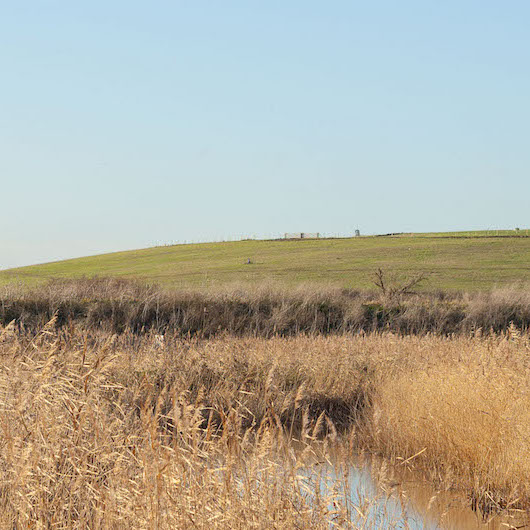
Legislative & Executive Branch Advocacy
Policy Navigation Group members have an extensive track record of combining analysis and advocacy into valuable results for clients. We have a long track record of delivering success to clients even with seemingly intractable regulatory and other policy problems.
Policy Navigation Group has developed and managed the national advocacy strategy for trade associations and a coalition of companies for several high-profile emerging chemical issues. We are performing and coordinating the economic and regulatory analysis as well as the policy and science policy advocacy for these issues. In addition to our Federal efforts, we are carrying out the advocacy effort in several states.
PNG members designed the air quality modeling for a major industrial facility to support an air permit that was part of a major multi-media settlement of environmental issues at the facility. The air portion of that agreement was the only part of the plan that did not meet with serious opposition from regulatory officials.
Our members devised and helped implement a risk-based remediation strategy for one of the largest chemical facilities in the western hemisphere. When existing state regulations presented an obstacle, we advocated for and obtained senior agency support for a regulatory change. The state promulgated new regulations, saving the company tens of millions of dollars.
Our members obtained a formal EPA guidance memo that allowed a client to install an innovative remediation system that avoided tens of millions of dollars in conventional groundwater treatment costs. We positioned the client’s site-specific issue as a national example of this technology and obtained the support of a states’ organization for the need for an EPA policy change.
PNG members obtained a favorable hazardous waste regulatory interpretation for innovative recycling technology. Four companies that developed and licensed the technology saved millions of dollars. Our project involved regulatory analysis, quantitative analysis of regulatory benefits, state, EPA Regional, and Federal advocacy with career and political leadership. EPA considered the innovation important enough to highlight the technology and the regulatory interpretation process as a key reform in its national RCRA conference.
We negotiated the first new mine expansion permitted in Idaho in years, adding millions of dollars to a client’s revenues and assets. We devised a collaborative multi-agency process that combined Federal and State environmental reviews. PNG members created an environmental analysis of project’s potential environmental impact and developed successful arguments to agency concerns.
Achieve Approval of Innovative Cleanup Solutions
Successful remediation organizations lower cost through innovative advocacy and innovative technology. While many remediation organizations often interact predominately with Federal and State agencies at the technical level, we find that the policy levels of Federal and State agencies can approve the most cost-effective and innovative solutions. Our members have saved companies hundreds of millions of dollars in unnecessary remediation expense through our advocacy efforts. Investing in advocacy as part of environmental liability management produces values many times its cost through creating these opportunities:
- Aligning the plans for a site with the government’s review, minimizing risk and the costs of capital
- Negotiating innovative and lower cost remediation
- Raising the profile of the site so as to achieve site plan approvals more quickly
- Jumping to a remedy solution to skip unnecessary investigations and paperwork
- Increasing the value of a liability exchange to accurately assess the regulatory risk in a transaction
Policy Navigation Group members participated in managing two joint-venture liability management companies to extinguish $330 million in remediation liabilities for a major corporation. For five years, PNG members directed resources, personnel assignments, strategic project reviews, and financial analyses of different advocacy and technology options at nearly 60 sites in over 10 states and in virtually every EPA region. The joint ventures integrated advocacy, site knowledge, and technology in coherent strategy to achieve aggressive financial targets.
Our members helped negotiate a cost-effective cleanup agreement and community buyout between two major companies, EPA, community leaders, and elected officials. The companies’ voluntary buyout allowed EPA to select a cleanup remedy that saved the companies approximately $50 million. The companies were preparing to spend millions of dollars to resolve their contribution actions and site negotiations through Superfund litigation; our advocacy solution also eliminated these costs.
Our members were part of the team that settled EPA’s largest hazardous waste compliance case at the time. We advocated and won EPA leadership acceptance of many supplemental environmental projects instead of financial penalties. We also resolved the case so the facility could remain operational while upgrading its equipment.
Our members helped a client facing an adverse regulatory decision that would have required construction of two, $10-million groundwater treatment plants. We designed unique, risk-based regulatory criteria that allowed virtually all of this groundwater to be treated in its existing waste water treatment plant. We secured state and EPA acceptance of these criteria.
We devised and advocated a risk-based remediation program for the largest chemical facility in the western hemisphere. We took the site from remedial investigation to final remedy approval in four years. Upon state acceptance, this company eliminated at least $100 million in potential remediation costs. This project comprised several significant advocacy accomplishments:
- Our advocacy won a two-year suspension of existing cleanup obligations from the state as we negotiated the risk-based program, saving the company millions of dollars annually in unnecessary paperwork and site characterization.
- When existing state regulations presented an obstacle, we advocated and obtained senior agency support for a regulatory change to allow the program. The state changed the regulations to allow the program to qualify.
- Our advocacy helped overcome Federal objections to the state regulatory change and the program.

